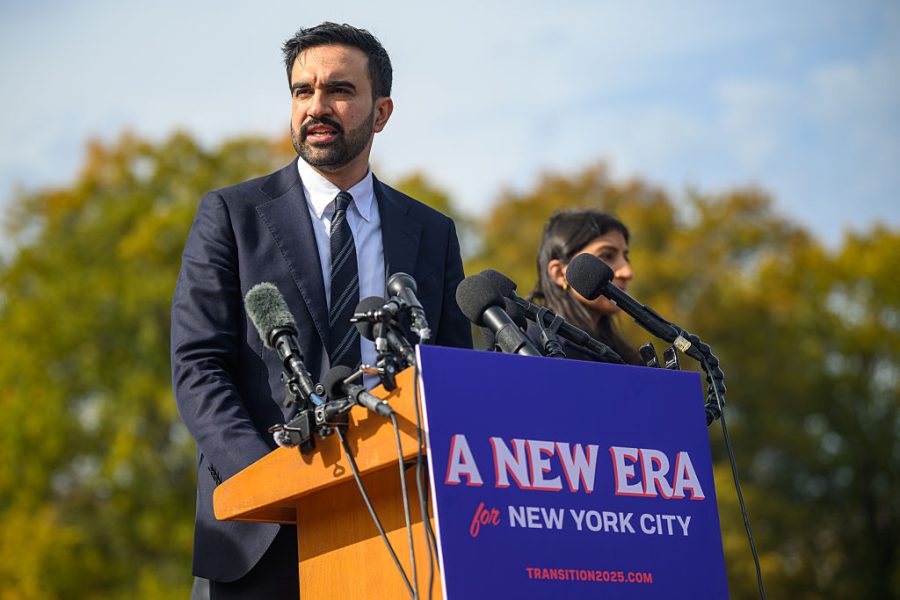In the aftermath of war, a new front opens. Not in the ruins of Gaza’s cities, but in the corridors of diplomacy, where maps are redrawn with words and allegiances. Israel now finds itself encircled not by tanks but by treaties, resolutions, and incentives: a web of international manoeuvres that promises ‘stability’ while redefining the terms of its own strategic freedom.
At the centre of this recalibration is the United States, whose post-conflict blueprint projects a pacified region steered by pragmatism, compromise, and multilateral oversight. But beneath the rhetoric of reconstruction lies a more perilous logic: one that treats deterrence as destabilising, ambiguity as maturity, and the survival instincts of a sovereign state as obstacles to a larger design. The campaign that follows the battlefield is being waged through normalisation overtures, hostage diplomacy, and a new lexicon of restraint. What it risks institutionalising is not peace, but paralysis.
The new ‘diplomatic Iron Dome’ protects Washington’s vision, not Israel’s freedom of action
The political campaign following the military phase of the Gaza war is intensifying. Israel now faces a dense web of diplomatic manoeuvres that frame the ‘day after’ not as a local reconstruction issue but as a regional architectural redesign led by Washington.
The US submission to the UN Security Council proposing the removal of sanctions on Syria’s president Abu Mohammed al-Jolani and Interior Minister Anas Khattab represents a dramatic turn in American pragmatism. What was once an unthinkable act – legitimising a jihadist leader – is now justified as a ‘stabilisation mechanism’. Israel, of course, will view this with alarm: a precedent that may one day apply to Hamas under a different diplomatic label. Though Israel itself also must work out the tone of its own relationship with the new Syrian regime.
In Tehran, security forces have conducted coordinated arrests of journalists, academics and intellectuals, including Parviz Sedaghat, Mahsa Asadollahnejad and Shirin Karimi. These detentions reveal both the regime’s growing insecurity and its determination to silence criticism as regional pressure mounts. For Israel, it signals that Iran’s internal instability coexists with its external aggression. The twelve day war this summer may have set back Iran’s ballistic missile stocks and severely hampered its nuclear programme, but it is not yet a spent force. The regime is working hard to rebuild its influence in the region.
The release of two French hostages, Cécile Kohler and Jacques Paris, held in Iran since 2022, announced by President Macron, was celebrated in Europe as a humanitarian success. Yet in Jerusalem some read it differently – as another European move towards détente with Tehran at precisely the moment Iran tries to deepen its footprint in Syria, Lebanon and Gaza.
Saudi Arabia’s F-35 request, reportedly under US review, underscores Washington’s transactional vision for the region. The Americans seek to balance strategic containment of Iran with rewarding Riyadh’s cautious engagement in the ‘Abraham Accords 2.0’. Israel, however, perceives the move as a potential erosion of its qualitative military edge.
In Gaza, Israeli airstrikes continue around Khan Younis, while Hamas’s implementation of phase one of the hostage agreement remains frozen. Washington’s willingness to overlook this delay, its familiar ‘constructive blindness’, reflects a deeper pattern: the pursuit of regional calm even at the cost of Israeli deterrence credibility.
What remains largely unreported outside Israeli security circles is that hundreds of Hamas operatives are currently trapped underground in the Yellow Line zone of Gaza – an area now under firm Israeli control. These fighters, many of them senior operatives and commanders, are believed to be sealed inside tunnel complexes without viable exit routes. Against this backdrop, reports that Israel is prepared to discuss their rescue in exchange for the return of its fallen are not only astonishing but indefensible.
Was there not already an agreement, reportedly under American guarantees, that included the return of all hostages and fallen soldiers? If such an agreement exists, why is Israel now contemplating a second payment for an obligation that remains unfulfilled? This is not diplomacy, it is capitulation through instalments. Every such concession rewards breach, incentivises delay, and confirms to adversaries that Israeli firmness can be negotiated away.
The problem is deeper than one deal: Israel’s approach to negotiations with jihadist organisations systematically privileges humanitarian optics over strategic integrity. It grants terrorists leverage through threats, rewards them for violations, and tolerates delay and deceit. No enemy could ask for a clearer signal to exploit.
The Palestinian question is once again being repositioned as a gateway to wider Arab normalisation. The anticipated visit to Washington by a senior Saudi royal is tied to renewed references to the early-2000s Saudi Peace Initiative, which is a move away from the unconditional spirit of the original Abraham Accords.
Simultaneously, the New York mayoral victory of the anti-Israel Zohran Mamdani has become symbolic far beyond US borders. His victory has shocked Jewish communities and revealed how the language of American progressivism increasingly overlaps with Islamist rhetoric. In Jerusalem, this is viewed as an early warning of ideological convergence hostile to Israel.
Turkey and Iran, meanwhile, edge closer to Israel’s borders under the umbrella of American-backed ‘regional security structures’. Reports of an Iranian-Belarusian defence partnership and Washington’s contemplation of Turkish participation in a UN ‘monitoring task force’ highlight the contradiction between US multilateralism and Israel’s security autonomy.
Against this backdrop, the US strategy of ‘ending the Middle East’s wars’ morphs into a mechanism that restrains Israeli initiative. Each call for restraint becomes a soft veto on pre-emption. The new ‘diplomatic Iron Dome’ protects Washington’s vision, not Israel’s freedom of action. The Hamas question, therefore, risks drifting toward a tacit international compromise: a shadow governance model where the organisation retains presence without sovereignty, while Israel is urged to show ‘strategic maturity’. For Jerusalem, this is nothing less than the institutionalisation of ambiguity as policy.
In sum, the emerging American-centred order seeks stability by neutralising Israeli dynamism. It redefines the Middle East according to Western blueprints that ignore the raw materials of its reality: religion, power, fear, and tribe. The foundations of the next conflict are already being poured, not only with Israel’s traditional adversaries, but with its supposed allies.








Comments